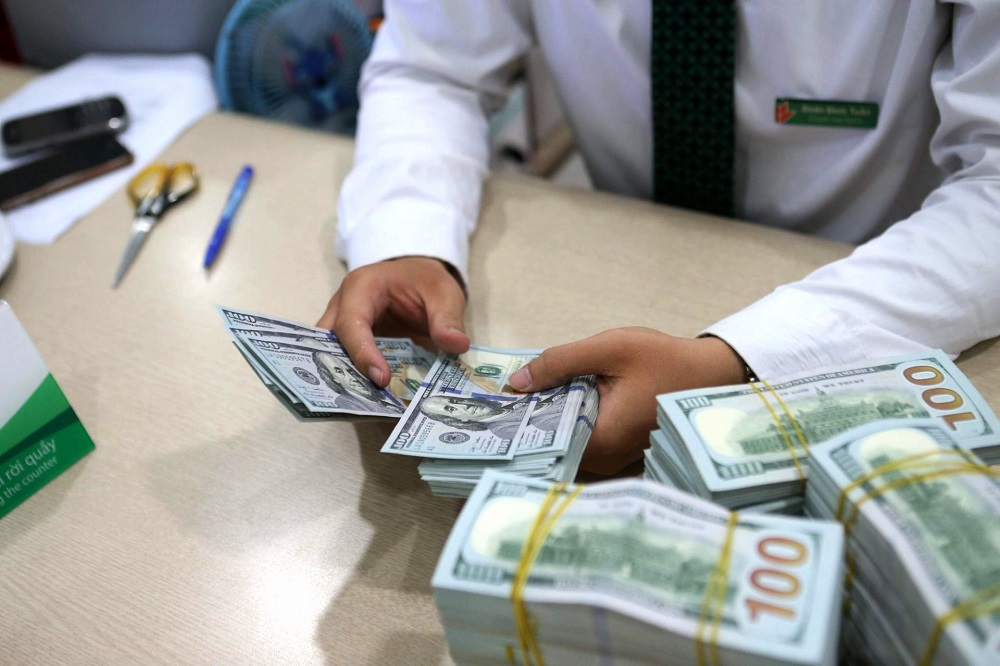What is driving the US dollar down?
The factors driving the US dollar seem to be pushing the greenback in the direction of an even bigger slide. The US dollar has already fallen by more than 10% this year on the DXY index and another 5-10% decline is anticipated for the second half of 2025.

The US dollar has endured one of its biggest half-year declines so far this year. Only the decline in the middle of 2009 was larger than that seen in the first six months of this year. And don’t forget, the slide in 2009 came after an enormous rise in late 2008 as the global financial crisis unfurled. In contrast, the sharp decline in the US dollar over the past six months follows a period in which the greenback has mostly traded in a sideways fashion in recent years.
We can never be sure of the factors that have undercut the US dollar, but poor policy choices in areas such as tariffs, fiscal policy and, more recently, Fed bashing by President Trump, appear to have contributed to the decline. Looking ahead, some of these policy choices will likely be reversed, but some will not.
On tariffs, it appears that there could be a flurry of activity as we count down to the July 9th deadline for tariff rates to ratchet up again. Many countries are working furiously to avoid these increases and some, such as the UK, have seen success. And even countries that appeared sceptical of ceding ground to the US have seemingly come to the negotiating table a bit faster than might have been expected.
Here we are specifically thinking about the US’s primary bugbear – China. But the question here is whether a raft of trade deals can undo the damage to the US dollar that had been inflicted even before Trump’s infamous ‘liberation day’ tariff announcement in early April. Steven Barrow, Head of Standard Bank G10 Strategy, suspects not. In Steven Barrow’s opinion, one reason is that the introduction of tariffs earlier this year should have proved positive for the US dollar. That’s what the theory suggests and it has also been the experience when the US, and other countries, have introduced tariffs in the past. The fact that the US dollar has fallen, not risen, suggests to us that there’s a deep malaise around the US dollar that cannot seemingly be reversed by even US dollar-positive actions such as tariffs. It is the same when we come to monetary policy.
Normally, we’d expect the US dollar to rise when the Fed holds policy steady and others ease. But that’s not happened this year. With sentiment towards the US dollar so poor, we would not expect a reduction in tariff rates to support the currency over the remainder of the year. By the same token, the lack of Fed rate cuts so far this year might not have lifted the US dollar, but we would still expect that any reductions in the second half of the year will undermine the greenback.
“We still don’t think that the Fed will lower rates until Q4 which, if correct, could disappoint a market that is increasingly priced for the Fed to trim rates in September. But even such stubbornness from the Fed seems unlikely to bring the US dollar any solace as it will surely just evoke even more condemnation of Fed Chair Powell by President Trump; something that also seems to be pulling the rug out from under the US dollar. Ordinarily, we might caution that the extent of the dollar’s fall to date, and what seems to be growing uniformity of dollar-bearish views in the market, risks a sharp, if temporary rally in the greenback”, said Steven Barrow.
In essence, US dollar bearish sentiment and positioning could create the conditions for a substantial short squeeze. But we feel quite relaxed about this. “Our sense now is that, while the dollar may experience modest bouts of strength, the 1.05-1.10 range that contained euro/dollar for much of the past 2 ½ years seems unlikely to be revisited as the euro pushes on towards 1.30 over the coming year, with the dollar experiencing similar weakness against other currencies”, forecasted Steven Barrow.
Not only is the US dollar falling, but some others, notably eurozone policymakers, see this as an opportunity to further the case for their own currency to challenge US dollar hegemony. This week’s ECB central bank conference in Sintra will offer another opportunity for the likes of ECB President Lagarde to make the case for the euro. But, there is a very long way to go for the euro to overtake the US dollar. We are sceptical that it can do this, but at the same time, it does not need to do this in order to rally against the greenback. Hence, Steven Barrow thinks it is wrong if traders and investors feel that the euro has to see its global usage rise relative to the dollar in order to rally.








